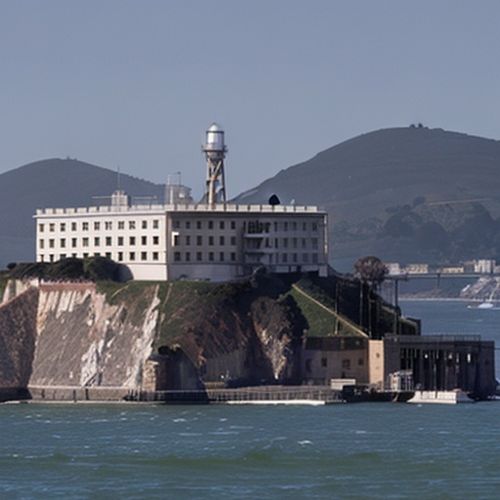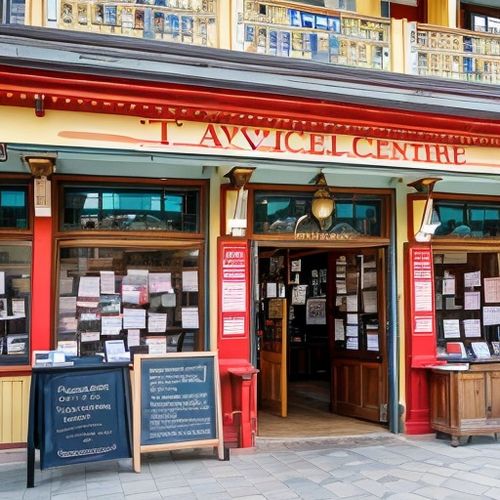In the heart of San Francisco Bay, the iconic island of Alcatraz stands as a silent sentinel, a relic of history that has witnessed the passage of time and the tides of change. Known for its storied past as a federal penitentiary, a military fort, and a site of Indigenous activism, Alcatraz is more than just a tourist attraction; it is a living testament to the layers of American history. However, as sea levels rise and the forces of nature threaten to reclaim this historic site, the future of Alcatraz now lies in the hands of one man: Pete Kelsey.
A Once-in-a-Lifetime Endeavor
In December 2023, Pete Kelsey, a technologist specializing in 3D data capture, embarked on a mission that he would later describe as a "once-in-a-lifetime endeavor." Tasked with mapping the entire island of Alcatraz, Kelsey's goal was not just to create a digital replica but to future-proof the site for generations to come. The motivation was scientific, but for Kelsey, it was something more profound—an "Indiana Jones kind of moment," a chance to explore a site that has been many things to many people.
Alcatraz's history is rich and varied. Best known for its 29 years as a federal penitentiary, the island has also served as a military fort during the Civil War, protecting San Francisco from Confederate raiders. In 1969, it became the site of a 19-month occupation by Indigenous activists fighting for Native American civil rights. Each layer of its history adds to its significance, making the preservation of Alcatraz a task of monumental importance.
Mapping the Unseen
Kelsey's journey began with the insistence that he and his team map every inch of the site. This was no small feat, as many areas of the island are off-limits to the public due to safety concerns, including lead, asbestos, and structural damage. Armed with state-of-the-art equipment, including hand-held cameras, drones, Boston Dynamics' robot dog "Spot," and a Flyability Elios 3 drone encased in a collision-resistant cage, Kelsey and his team set out to document every corner of Alcatraz.
The technology at the heart of the project was LiDAR, or Light Detection and Ranging. This airborne mapping technique uses laser scanning to create three-dimensional models with centimeter-level accuracy. "Think of it like an X-ray or a CAT scan of the entire island," Kelsey explains. "It’s making the invisible visible." The team's efforts were not without challenges. Alcatraz is managed by the National Park Service, which does not allow drones on its land. Securing a permit took months, and the team had to wait for the end of nesting season twice before they could begin their work.
Discoveries and Ghost Stories
The project, which began in December 2023 and concluded in January 2025, took over a year to complete. The team spent three weeks on the island, sleeping in cells in the notorious D-block, where some of Alcatraz's most dangerous inmates were once held. It was during these weeks that Kelsey and his team uncovered some of the most significant historical findings of his career.
One of the most notable discoveries was the imaging of the original Civil War-era sallyport, or secured entrance. Located on the east side of the island, this entrance had been concealed by a century-old building. Kelsey's team was able to reveal it in stunning detail, providing a glimpse into a part of Alcatraz's history that had been hidden for decades.
Another significant finding was related to the prison's most famous escape in 1962. Frank Morris and brothers Clarence and John Anglin chipped away at their cells, climbed up a network of pipes, and escaped onto the prison roof. From there, they clambered down to the water and launched a raft from the northeast shore. Kelsey's team produced a detailed scan of the path they took, providing new insights into one of the most daring escapes in history.
A Baseline for the Future
Kelsey's maps and data will now serve as the baseline for future surveys, allowing for informed predictions about climate change, seismic activity, and the general deterioration of the site. The models can be "aged," meaning the park service can better allocate limited funding for preservation efforts. The potential uses of this data extend beyond scientific applications. Kelsey, who has also worked in documentary and film, envisions the data being used in the arts. Movie directors could use the models to replicate the entire prison with greenscreens, while virtual tourism could allow people to experience parts of the prison without ever setting foot on the island.
The Legacy of Alcatraz
The data from this project is some of the best Kelsey has ever collected. "I've done this kind of work all over the world," he says. "This project, however, I think it just might be my Mona Lisa." The significance of Alcatraz extends beyond its physical structures. It is a symbol of resilience, a place where history has been made and where it continues to be preserved through innovative technology.
As Kelsey and his team leave the island with their ghost stories and groundbreaking findings, they carry with them a digital legacy that will ensure Alcatraz's history is not lost to time. The future of Alcatraz may lie in the hands of one man, but the impact of his work will be felt by generations to come. Through the power of technology, the island's storied past will continue to inspire, educate, and captivate the hearts and minds of those who seek to understand its many layers.

By Samuel Cooper/Apr 15, 2025

By Christopher Harris/Apr 15, 2025

By Eric Ward/Apr 15, 2025

By Noah Bell/Apr 15, 2025

By George Bailey/Apr 15, 2025

By Daniel Scott/Apr 15, 2025

By Elizabeth Taylor/Apr 15, 2025

By Grace Cox/Apr 15, 2025

By Jessica Lee/Apr 15, 2025

By Jessica Lee/Apr 15, 2025

By Ryan Martin/Apr 11, 2025

By Victoria Gonzalez/Apr 11, 2025

By Christopher Harris/Apr 11, 2025

By Victoria Gonzalez/Apr 11, 2025

By George Bailey/Apr 11, 2025

By Megan Clark/Apr 11, 2025

By Natalie Campbell/Apr 11, 2025

By Eric Ward/Apr 11, 2025

By Benjamin Evans/Apr 11, 2025